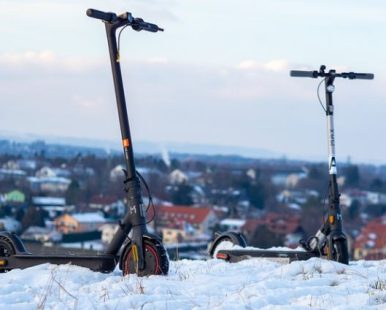Ride an Electric Scooter on the road and you risk confiscation of your pricey machine … plus 6 points on your license for ‘no insurance’. So why are you allowed to ride an Electric Bicycle? The official response:
Cycles, including bicycles, are defined in legislation in section 192 of the Road Traffic Act 1988. Construction and use requirements are set out in the Pedal Cycles (Construction and Use) Regulations 1983 which can be viewed at: www.legislation.gov.uk/uksi/1983/1176/contents/made
Electrically assisted pedal cycles (EAPC), often called ‘e-bikes’, are defined in legislation in the Electrically Assisted Pedal Cycles Regulations 1983 which can be viewed at: www.legislation.gov.uk/uksi/1983/1168/contents/made. Section 189 of the Road Traffic Act 1988 exempts them from being considered as ‘motor vehicles’.
E-scooters are a type of powered transporter, also known as micromobility devices. These are treated like any other motor vehicle under the Road Traffic Act and are subject to laws requiring them to be built and used safely. Thus, users will need to have insurance, driving licences, number plates, and helmets. The law was not drafted with e-scooters in mind. Consequently, it is not possible for an e-scooter user to comply with the legal requirements for motor vehicles as set out in this paragraph. Offences relating to driving standards and speeding also apply.
It is, therefore, illegal to use a powered transporter on a public road without it complying with these legal requirements. It is also illegal to use a powered transporter in spaces which are set aside for use by pedestrians, cyclists, and horse-riders. This includes on the pavement and in cycle lanes. Guidance on this can be viewed at: www.gov.uk/government/publications/poweredtransporters/information–sheet–guidance–on–powered–transporters.
In July 2020 the Department made regulations to enable trials of rental escooters to take place. For the purposes of these trials, the Department published guidance, including the minimum technical requirements for escooters, to local authorities and e-scooter operators on how trials will run. This can be viewed at: www.gov.uk/government/publications/e–scooter–trialsguidance–for–local–areas–and–rental–operators/e–scooter–trials–guidance–forlocal–areas–and–rental–operators.
The Electric Scooter Trials and Traffic Signs (Coronavirus) Regulations and General Directions 2020 enable trial e-scooters to use cycle lanes and some other facilities and can be viewed at: www.legislation.gov.uk/uksi/2020/663/contents/made. A public consultation was carried out in June 2020 on the proposed regulations to allow e-scooter trials to take place. The consultation and Government response can be found at: www.gov.uk/government/consultations/legalising–rental–e–scooter–trialsdefining–e–scooters–and–rules–for–their–use. Privately-owned e-scooters remain illegal during trials.
The Department consider that push (kick) scooters are likely to fall within the definition of a ‘carriage’ under the Highway Act 1835, and therefore by law are prohibited from being used on the pavement. By law, they are also prevented from being used on cycle tracks or lanes. There are no laws prohibiting their use on public roads, but a user would be required to obey traffic instructions, and follow the Highway Code. The rules are the same for all ages.
When a novel type of vehicle is introduced, if they are not already permitted or foreseen by legislation, the onus is on the promoters of such vehicles to present arguments and evidence to persuade the legislators to permit them – or redesign them to fit within existing legislation. For example in the case of EAPC, in 1983 the case was made, and the Department and Parliament agreed, that pedal cycles with a limited amount of electric power assistance, provided at speeds of up to 15mph, should be treated as pedal cycles rather than as motor vehicles. This meant that they would be exempted from the requirements that normally apply to motor vehicles, such as registration, driving licence, etc. on the basis that an EAPC provides a similar level of power as can be generated by a fit cyclist. Source: DfT 25/11/2021 ref. TO/378545
For more about eScooter CLAIMS (click here) and eScooter NEWS (click here)


